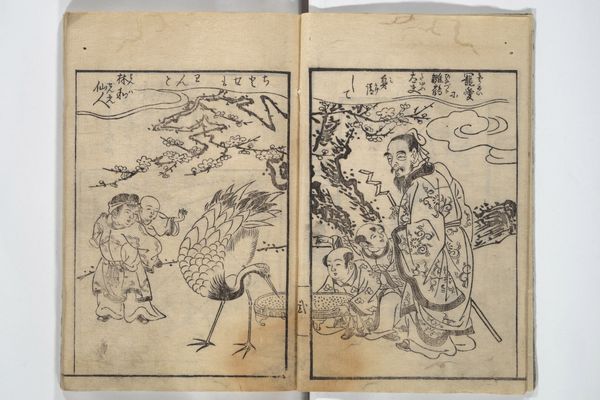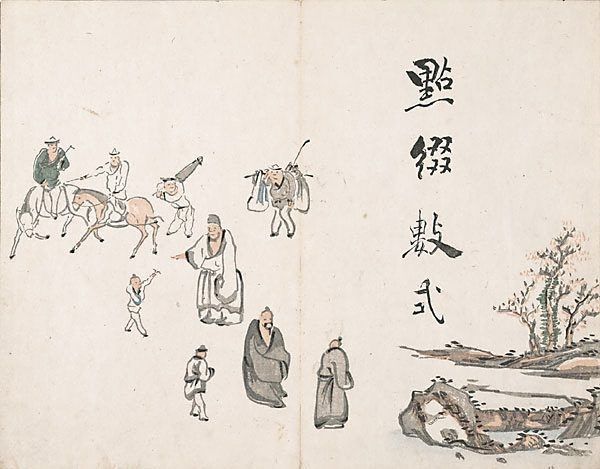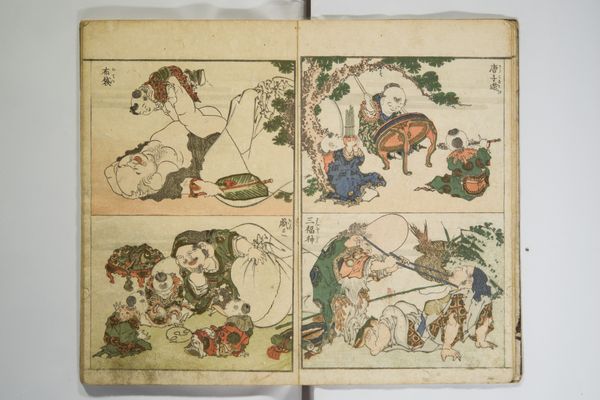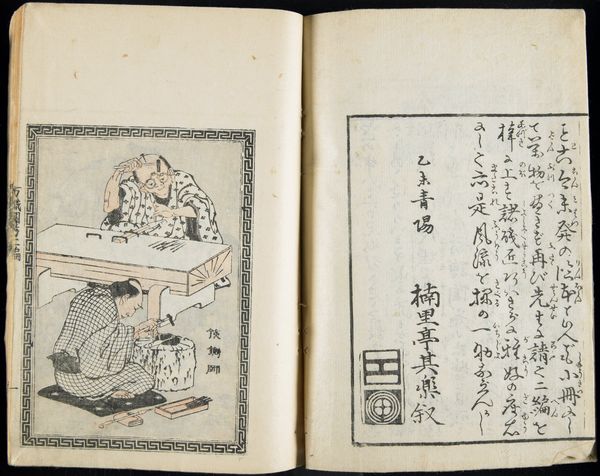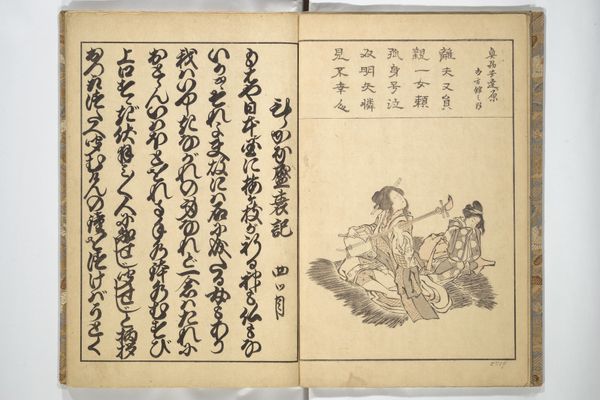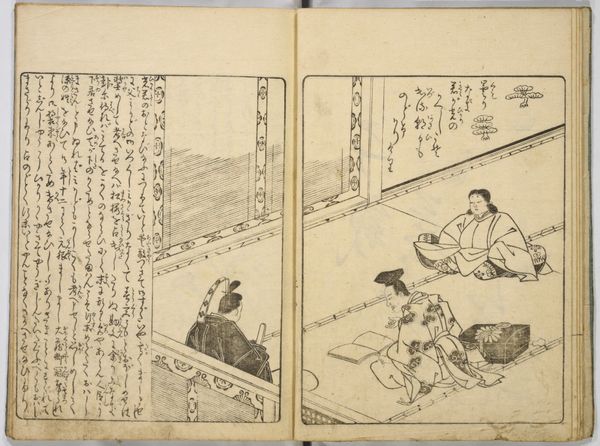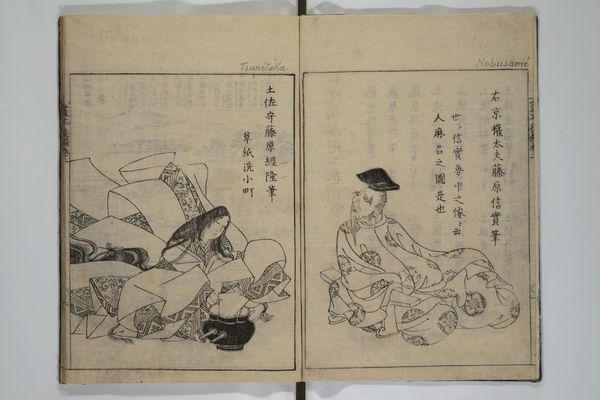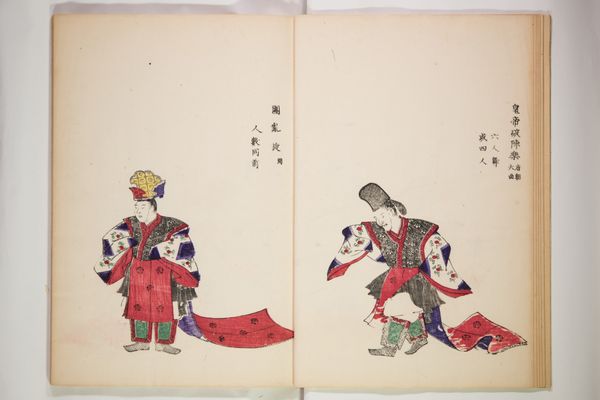
Encyclopedia of Musical Theater Performances (Seikyoku ruisan 声曲類纂) 1889
0:00
0:00
Dimensions: 10 1/4 × 6 7/8 × 1/2 in. (26.04 × 17.46 × 1.27 cm)
Copyright: Public Domain
Curator: Ah, the joy of the sketch book. Take a look at Hasegawa Settei's "Encyclopedia of Musical Theater Performances," dating back to 1889. The delicate drawings in ink and color on paper bring to mind the faint scent of aged pages and stories whispered across time. Editor: It looks incredibly intimate, doesn't it? Like we're peeking into someone's personal journal. The figures are all so absorbed in their music, their gestures almost caught mid-performance. I can almost hear the plucked strings and the gentle rise and fall of voices. Curator: Absolutely. It’s Ukiyo-e at its finest. These genre paintings are glimpses into the floating world. But it is interesting how a private sketchbook could also work as public record of these performances. Editor: You know, it's funny. Considering that music is meant to be heard and experienced collectively, doesn't containing musical theater within the pages of a book – silent, still, visually mediated – almost invert its very nature? Curator: I think you nailed the point, music vanishes even as we desperately try to freeze it in time, yet something always escapes isn't it? Perhaps that’s the poignant beauty of the encyclopedia’s endeavor. I feel drawn to how the socio-political context affected and encouraged artistic record in this way. Editor: It makes you wonder about the accessibility of these performances. How many people could witness them live, and how did this book perhaps democratize the experience in some way, or perhaps limit it? Who was this book made for and how might they use it? Curator: Yes, a complex series of questions unfold. This piece exemplifies how artistic legacy can act like both an inclusive preservation and a point of socio-historical division. Editor: It also emphasizes how any record, even one filled with so much vibrant life, always has a point of mediation and its own unique framing, whether visual or aural. What stories the book chooses to highlight, and the ones it leaves out become equally crucial. Curator: So well put. It is this sense of missing presence within documentation and archiving that fascinates me! Editor: For me, the invitation to engage so intimately with an art that's passed also carries a certain emotional potency. The music might be gone, but this drawing remains.
Comments
No comments
Be the first to comment and join the conversation on the ultimate creative platform.
